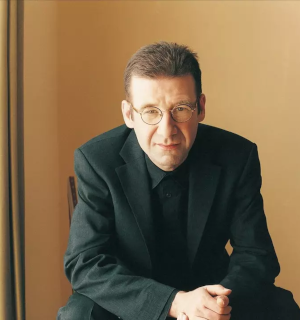
Ronan Hardiman, Irish composer, is born in Dublin on May 19, 1961. He is famous for his soundtracks to Michael Flatley‘s dance shows Lord of the Dance, Feet of Flames and Celtic Tiger Live.
Hardiman’s father is an Irish broadcasting executive. He listens to rock & roll and pop as a child. He has three sisters and one brother, and they all play traditional musical instruments. He attends St. Kilian’s German School and the Royal Academy of Music.
In 1978, at the age of 17, Hardiman begins working as a clerk at the Bank of Ireland, a position he holds for twelve years. He occasionally performs in local bands. In 1990, he quits his job and begins composing material based on Irish traditions for radio and television. He writes the theme music to the documentary My Riviera.
Hardiman’s television work includes commissions for the title music for RTÉ Irish National Television Network News, and the original score for the natural history series Waterways. He also writes music for commercials for Guinness and the Irish National Lottery. In motion pictures, he earns acclaim for his score to the 1996 feature My Friend Joe, which garners the Crystal Bear for Best Children’s Film at the Berlin International Film Festival.
Also in 1996, Hardiman is contacted by Michael Flatley, who quickly needs a soundtrack to his new show, Lord of the Dance. The show is an international hit.
In 1997, Hardiman releases his debut solo album, Solas, and a year later he resurfaces with Feet of Flames. His 2000 release, Anthem, blends the Celtic music sounds that he is famous for with more pop influences. The track “Ancient Lands” from Anthem is used by the 2002 Winter Olympics men’s figure skating champion, Alexei Yagudin, in his program “Overcome.”
In 2016, Hardiman writes “Sunlight,” along with Wayne Hector and Nicky Byrne. This is Byrne’s entry for the Eurovision Song Contest 2016.
Ronan’s sisters include the notable neurologist Orla Hardiman and the filmmaker Neasa Hardiman. He lives in Dublin, with his wife, Helen, and they have one daughter and one son.


